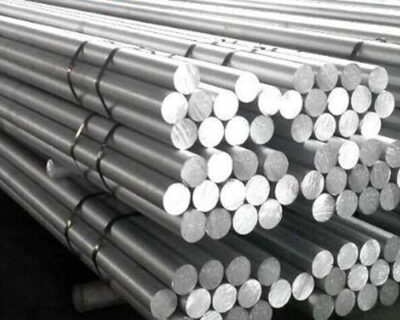The aluminum liquid that 6061 aluminum rod sucks out from the electrolytic cell contains various impurities, so it needs to be purified before casting. In industry, casting purification methods such as clarification, flux, and gas are mainly used, and directional solidification and filtration methods are also used for purification.
Aluminum Rod Casting Purification Technology
Flux purification is to use the fluxes added to the aluminum liquid to form a large number of fine droplets, so that the oxides in the aluminum liquid are wet, adsorbed and dissolved by these droplets, forming new droplets to the surface, and after cooling, the scum is removed. The flux used for purification is composed of salts with low melting points, small density, small surface tension, high activity, and strong adsorption capacity for oxidized slag. When in use, first put a small piece of flux into the iron cage, and then insert it into the bottom of the mixing furnace to stir back and forth. After the flux is finished, take out the iron cage and rest for 5~10min. Remove the surface scum to cast. The flux can also be withdrawn on the surface as needed to cover it.
Aluminum Rod Casting Purification Method
Gas purification is a main 6061 aluminum rod purification method. The gas used is chlorine, nitrogen, or a mixture of chlorine and nitrogen.

(1) Purification of chlorine gas. Previously, the active gas chlorine gas was used as a cleaning agent (chlorination method). In the chlorination method, when chlorine gas is passed into the aluminum liquid, a lot of abnormally small AlCl3 is generated, and the bubbles are sufficiently mixed in the aluminum liquid. The hydrogen dissolved in the aluminum liquid and some mechanical inclusions are adsorbed on the AlCl3 bubbles, and are discharged as the AlCl3 bubbles rise to the surface of the aluminum liquid. Chlorine gas can also chlorinate some elements that are more negative than 6061 aluminum rods. For example, calcium, sodium, magnesium, etc. can be separated by the formation of corresponding chloride due to the chlorine gas. Therefore, the chlorination method is a very effective primary aluminum purification method. The amount of chlorine gas is 500-700g per ton of aluminum. But because oxygen is toxic and relatively expensive, in order to avoid air pollution and reduce the cost of aluminum ingot production, the chlorination method has been gradually eliminated in the modern aluminum industry and changed to an inert gas— -Nitrogen purification method.
(2) Nitrogen purification method. Also known as smokeless continuous purification method, using alumina balls (418mm) as filter media. N2 passes directly into the molten aluminum. The aluminum liquid is continuously fed into the purification furnace, passes through the alumina ball filter layer, and is flushed with nitrogen, so the non-metallic inclusions and dissolved hydrogen in the aluminum liquid are removed, and then continuously discharged, so that the fine nitrogen bubbles are evenly distributed It plays the role of purification in the treated aluminum liquid. Nitrogen has no pollution to the atmosphere and has a large purification treatment capacity. It can process 200 to 600 kg of aluminum liquid per minute. The aluminum loss caused by the purification process is relatively reduced, so it is now widely used. However, unlike chlorine gas, it can not remove calcium, sodium, and magnesium from aluminum liquid.
(3) Mixed gas purification method. A mixture of chlorine and nitrogen is used to purify the aluminum liquid. The 6061 aluminum rod functions to remove hydrogen and oxides on the one hand, and to remove certain metal impurities (such as magnesium) in aluminum on the other hand. The common composition is 90% nitrogen +10 % Chlorine. There are also 10% chlorine + 10% carbon dioxide + 80% nitrogen. This effect is better, carbon dioxide can make chlorine and nitrogen diffuse well, and can shorten the operation time.

